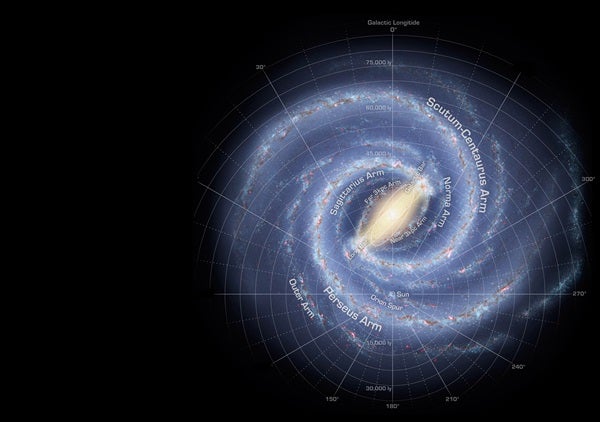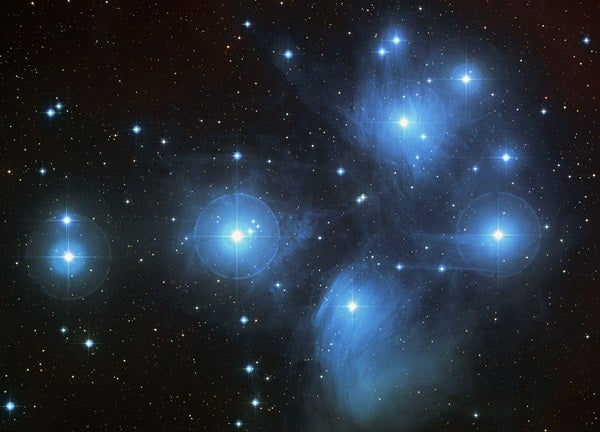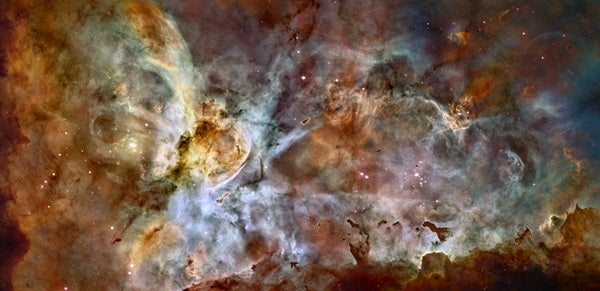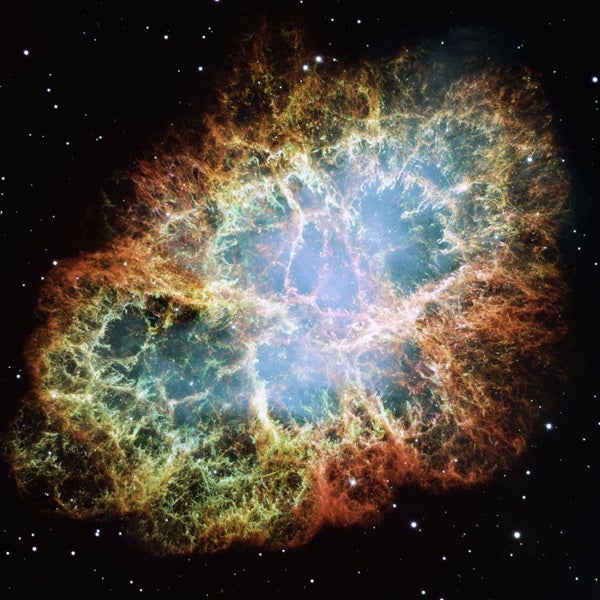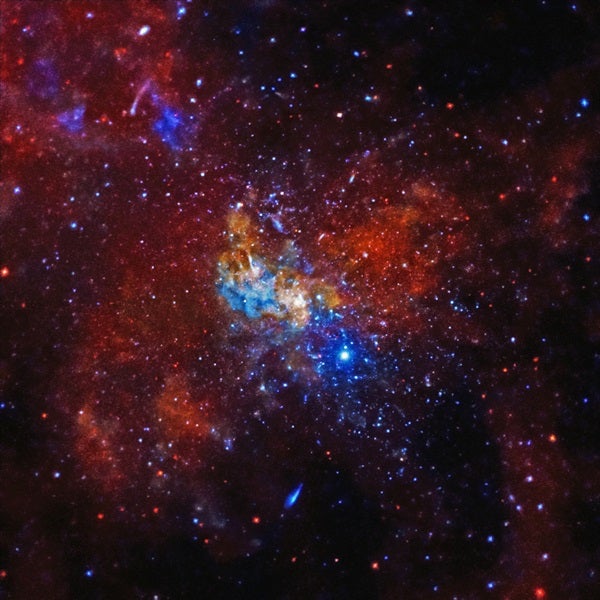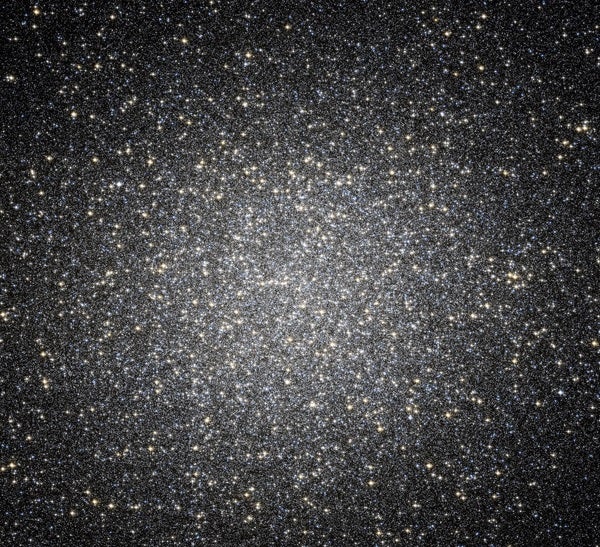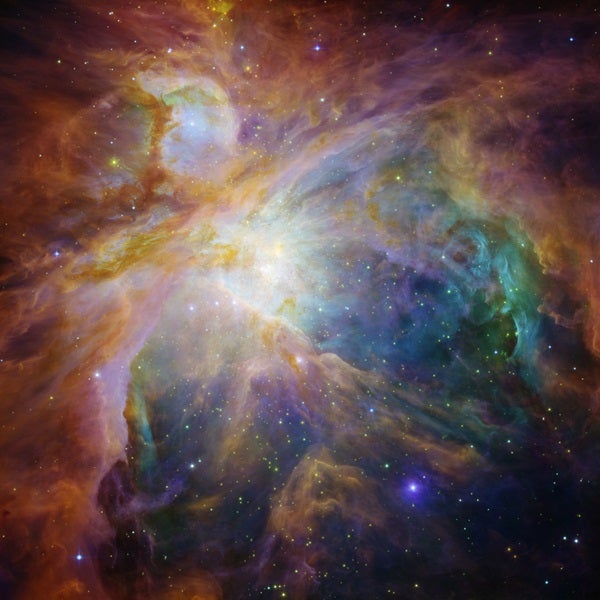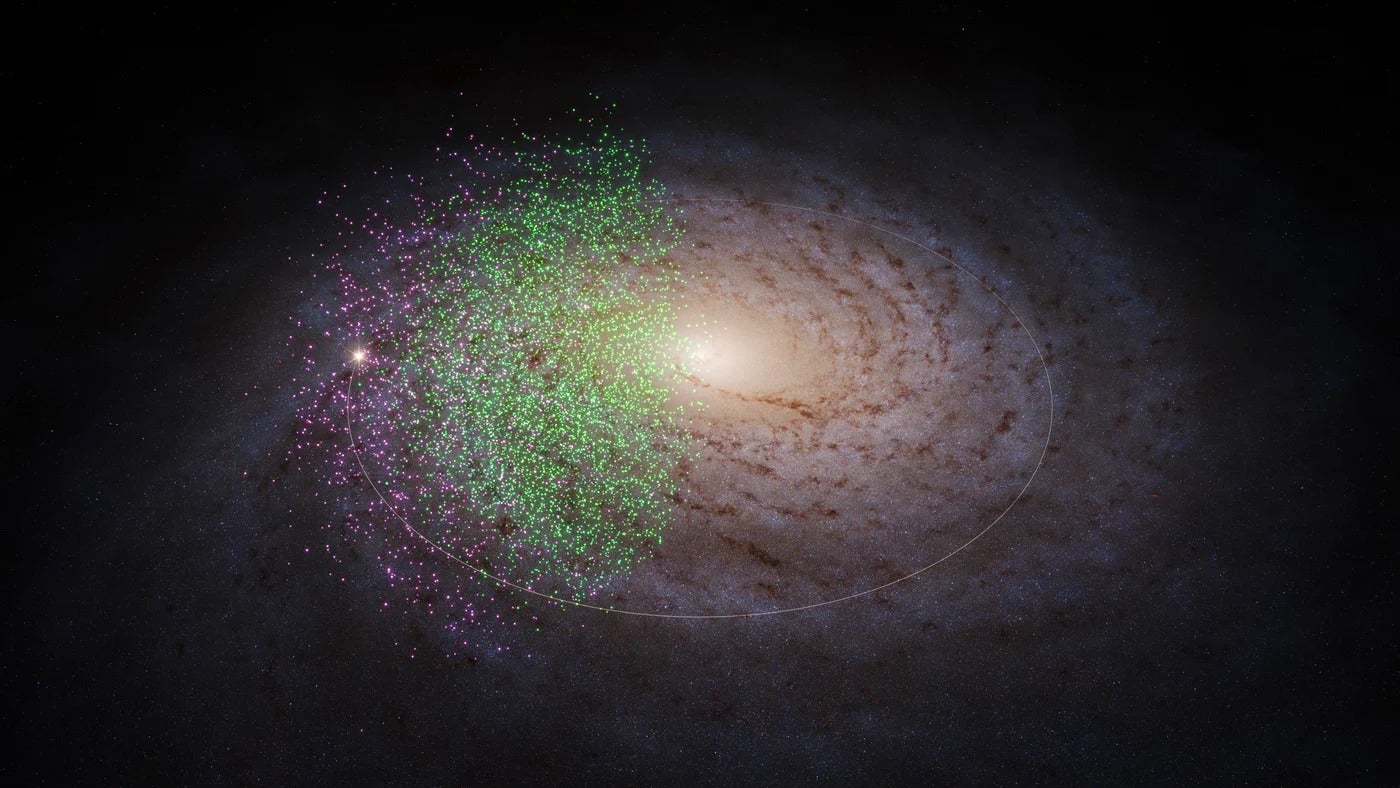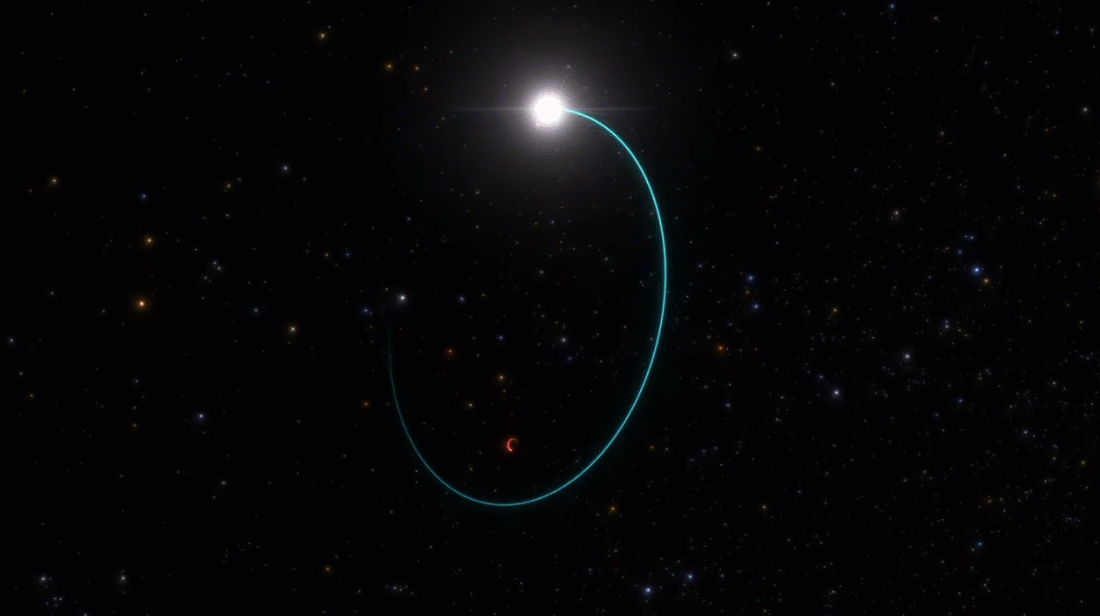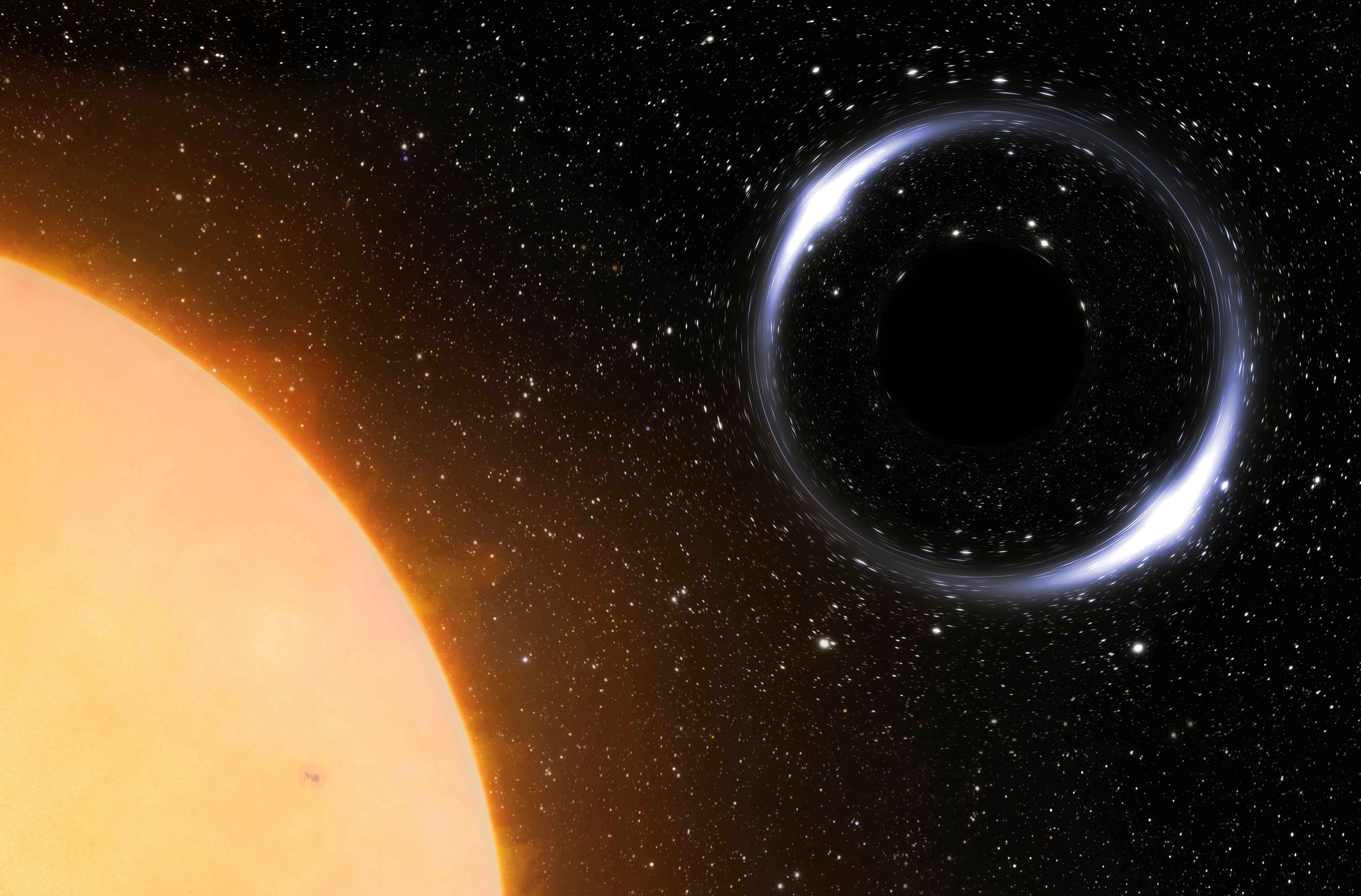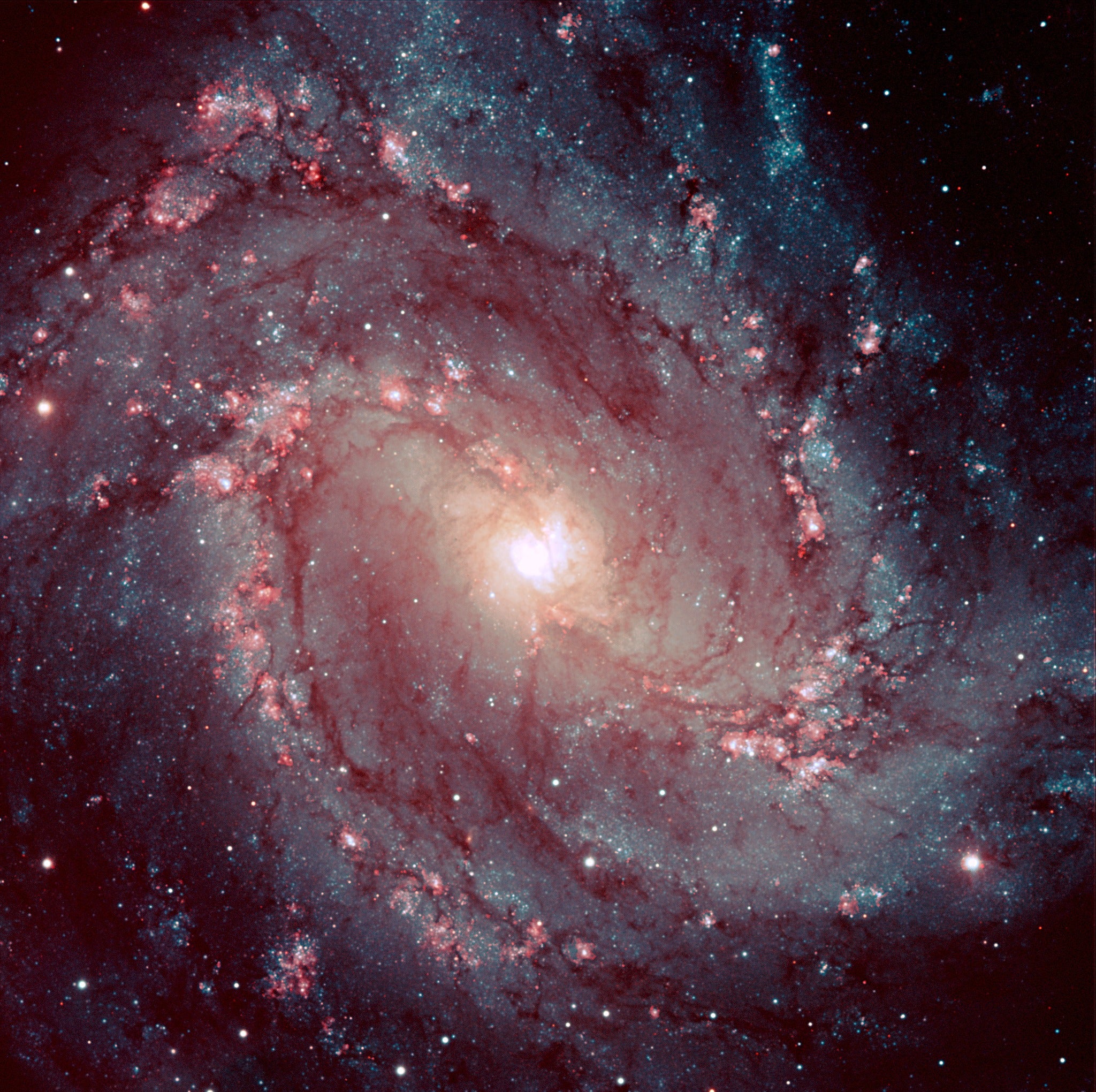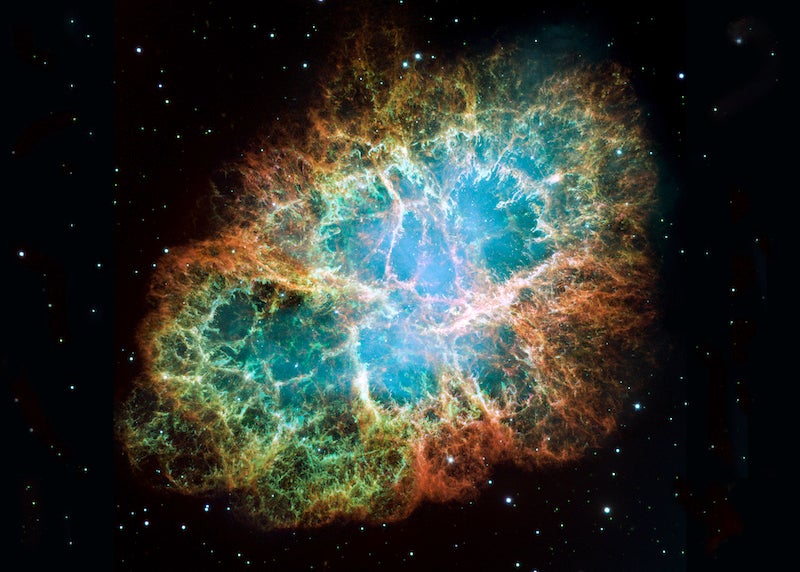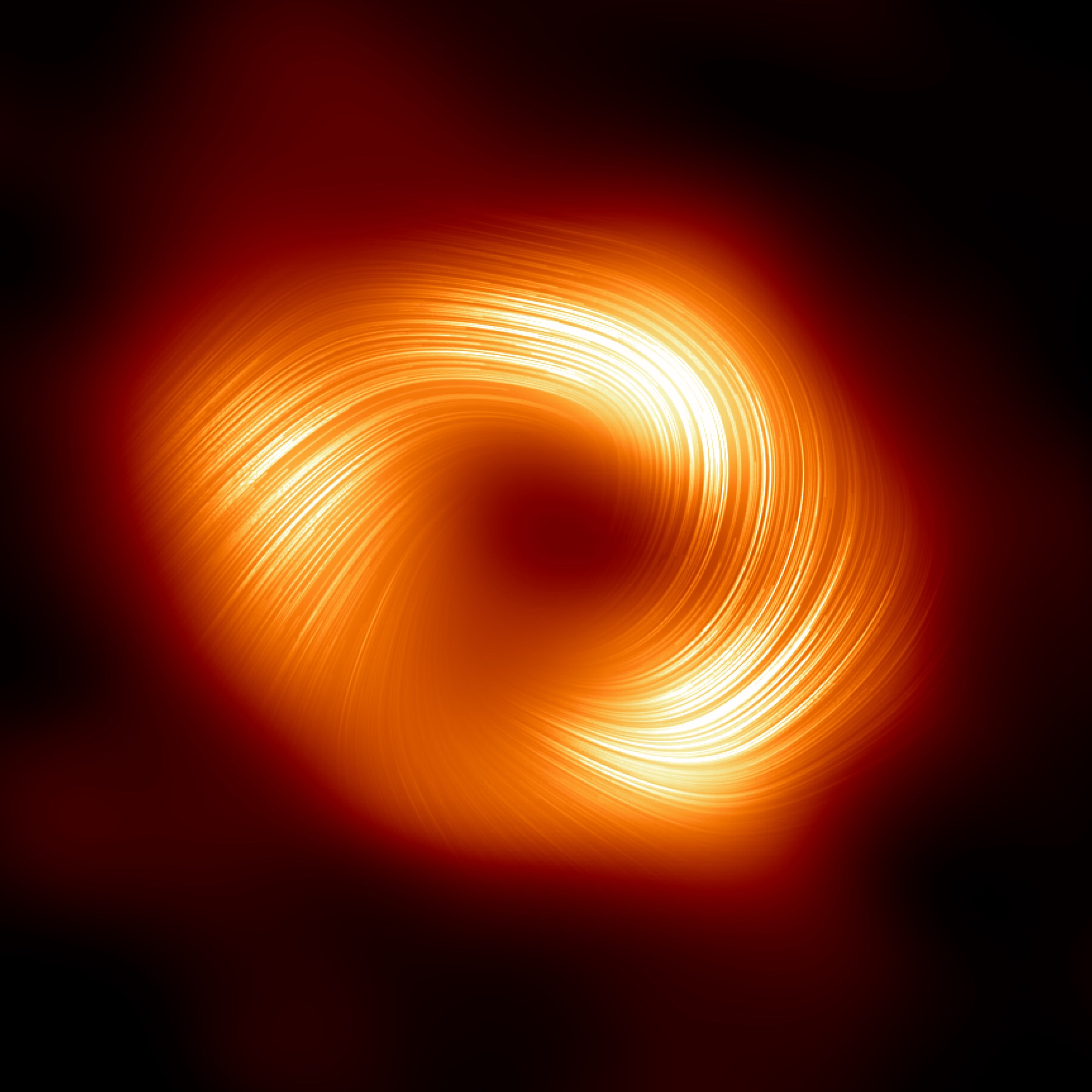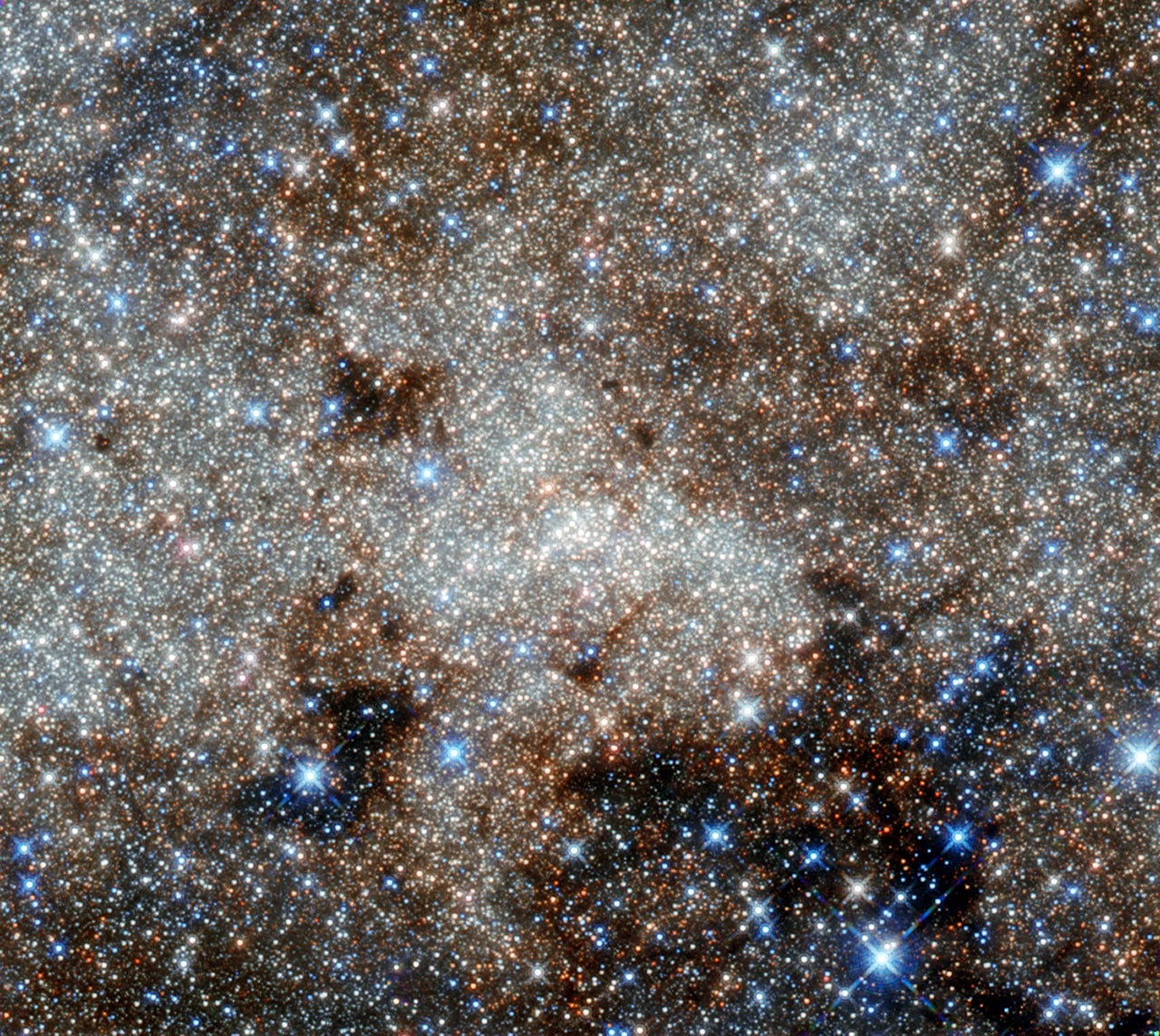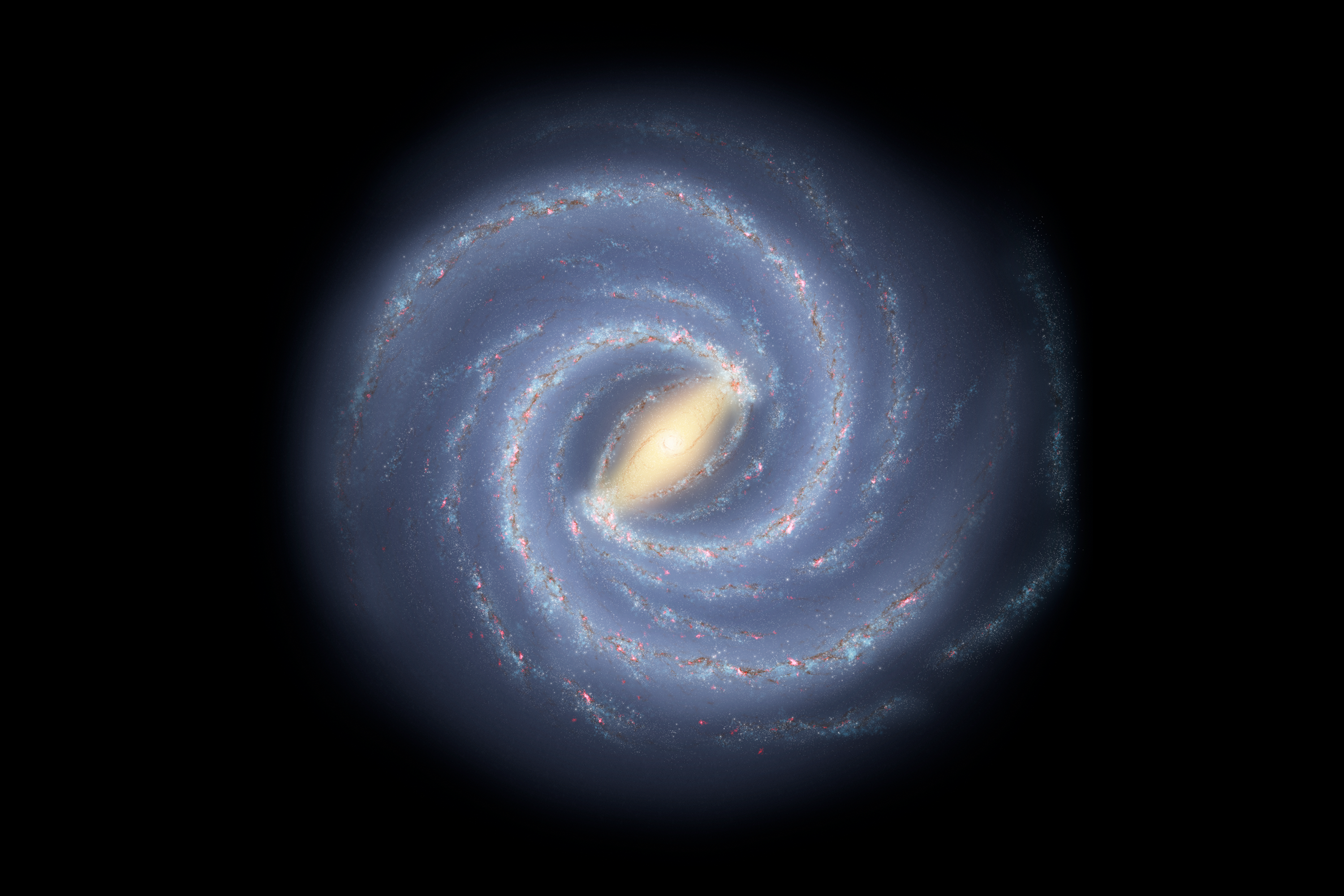Although recognized since antiquity, philosophers and scientists could only guess at what it represented until fairly recently (see “How the Milky Way Galaxy got its name,” p. 33). With the invention of the telescope, it became clear that the Milky Way was the collective glow of stars too faint to be seen by the naked eye. More than a century later, English astronomer Thomas Wright suggested that this glowing band was precisely what one would expect to see if the Sun were embedded in a flat disk of stars.
We now know that the Milky Way is the primary structure of our galaxy seen edgewise. Additional detail and especially the physical scale of the galaxy took another two centuries to work out. The process continues today as astronomers wrestle with conflicting evidence and make new discoveries. Much like mapping a fogbound city from a single intersection, scientists must decipher the galaxy’s structure while viewing it from inside a disk where dust clouds dim and block starlight.
The true scale of the Milky Way Galaxy — and, indeed, the universe as a whole — became dramatically clearer in the 1920s. That’s when a new generation of large telescopes coupled with photography revealed that “spiral nebulae” were actually entire galaxies like our own — “island universes” in the evocative parlance of the time. Surveys showed that most disk-shaped galaxies possessed winding spiral arms where young stars, gas, and dust were concentrated. Astronomers assumed our galaxy was a spiral too. In the 1950s, radio telescopes produced the first crude maps of the Milky Way’s spiral arms by tracking how gas clouds moved around the galaxy.
Several ambitious and complementary projects now aim to provide a true 3-D portrait of our galactic home. The European Space Agency’s Gaia spacecraft, which was launched in 2013, should return position and motion information of unprecedented accuracy for roughly a billion stars.
But Gaia largely covers optical wavelengths, which means that intervening dust clouds limit how deeply it can probe into the galaxy’s disk. Dust doesn’t affect radio wavelengths, and a facility called the Very Long Baseline Array (VLBA) can measure distances and motions to a small number of sources more accurately than Gaia.
By linking 10 radio dishes located from Hawaii to St. Croix so they function as a single telescope, the VLBA has the greatest resolving power available to astronomy. Two projects, the Bar and Spiral Structure Legacy (BESSEL) survey and the VLBI Exploration of Radio Astrometry (VERA), are using this capability to pinpoint the locations and motions of regions where new stars are forming in order to trace
our galaxy’s spiral structure.
The frontier of the galaxy lies at the outer fringe of the Oort Cloud of comets, about 100,000 astronomical units (AU; the average Earth-Sun distance) or 1.6 light-years away (see “From AU to light-year,” p. 34). Here, the Sun’s gravitational pull weakens to the level of nearby stars, and comets whose orbits take them this far may drift out of the Sun’s grasp entirely. Although the nearest star today is Proxima Centauri, 4.22 light-years away, other stars played this role in the past and will do so in the future.
All stars orbit the center of the galaxy, but these orbits are more elliptical and more tilted than planetary orbits in the solar system. The Sun now lies about 27,200 light-years from the Milky Way’s center — more than one-third of the way into the disk — and roughly 90 light-years above the galaxy’s midplane. During each orbit, which takes about 240 million years to complete, the Sun’s position oscillates above and below the galactic plane. Other stars in our vicinity follow slightly different paths, which means that the distribution and composition of our stellar neighborhood gradually changes. Stars routinely pass much closer to the Sun than Proxima Centauri is now.
For example, in 2014, astronomer Ralf-Dieter Scholz of the Leibniz Institute for Astrophysics in Potsdam, Germany, discovered that a faint M dwarf star detected by WISE was about 20 light-years away, making it a previously unknown close neighbor. A team led by Eric Mamajek at the University of Rochester in New York noticed that “Scholz’s Star,” which is actually a binary, shows little motion across the sky but rapid motion directly away from us, suggesting it might have grazed the solar system.
Dim, low-mass M dwarfs like Scholz’s Star and Proxima Centauri actually typify the Milky Way’s stellar population. Most of the galaxy’s roughly 400 billion stars are likely M dwarfs, but because they emit little visible light, we’re still finding those close to the solar system through infrared surveys like WISE. For stars, mass is destiny. M dwarfs may be dim, but their low masses mean they burn their nuclear fuel sparingly and will keep shining billions of years after the Sun dies.
Some stars barely shine at all. They never generate energy in their cores though true hydrogen fusion, the power source that heats stars for most of their lives, but when young they can produce energy by fusing a rare form of hydrogen, deuterium. Called brown dwarfs, they measure between 1.2 and 7 percent of the Sun’s mass. The companion to Scholz’s Star is a member of this class. With surface temperatures as cool as one-tenth the Sun’s, brown dwarfs are marginal stars that may be as numerous as the real things. More than 50 known stars and brown dwarfs reside within 16 light-years of the Sun, but only 10 of them are visible to the naked eye.
The night sky distorts our picture of the galaxy’s stars in another way, too. Of the 100 brightest stars in the sky, a third lie within 100 light-years. These include Sirius, the night sky’s brightest, 8.6 light-years away; Procyon, 11 light-years away; Vega and Fomalhaut, both 25 light-years off; Castor (52); Aldebaran (65); and Regulus (77). But another third lie more than 400 light-years away, including Polaris (430), Antares (600), Betelgeuse (640), Rigel (860), and Deneb (2,600). All these stars have masses more than seven times the Sun’s and are tens of thousands of times more luminous. Consequently, they burn through their hydrogen fuel at a faster clip. Long before our Sun’s fires quench, these stars will end their days in spectacular supernova explosions.
Going further up the mass scale results in an ever-dwindling number of stars, and not just because the most massive ones are so short-lived. Stars are born in dense, cold molecular clouds. Once a massive star forms, its intense ultraviolet light and a powerful outflow called a stellar wind start to disperse the birth cloud, limiting the number of other massive stars able to form nearby. Only a few dozen stars in the Milky Way have energy outputs exceeding a million times the Sun’s. Topping the list are WR 25 and Eta Carinae, two massive binary systems located about 7,500 light-years away and shining with 6.3 million and 5 million solar luminosities, respectively. Another eight stars in the Carina Nebula make the cut as well, and seven more occur in a stellar grouping called the Cygnus OB2 association.
Massive stars play a powerful role in mapping out our galaxy’s spiral arms. They can be seen across great distances, they explode before wandering too far from their stellar nurseries, and they can light up their dissolving birth clouds and excite molecules within them, like water and methanol. Under the right conditions, which are common in star-forming regions, these molecules can become masers — the microwave equivalent of lasers — and beam amplified radio waves our way, creating beacons that cut through starlight-blocking dust clouds.
Star groupings of various types also help trace galactic structure. OB associations are loose collections of between 10 and several hundred hot, young, and massive O- and B-type stars spanning up to a few hundred light-years. The nearest is the Scorpius-Centaurus OB2 association, which lies about 470 light-years away and boasts the red supergiant Antares among its members. Its oldest subgroup was born roughly 15 million years ago, and shock waves from a supernova helped trigger star formation in a neighboring cloud about 5 million years ago.
Open star clusters, such as the Hyades and Pleiades in Taurus (150 and 440 light-years away, respectively) and the Beehive in Cancer (about 580 light-years distant), are relatively compact collections of stars that formed together within the same molecular cloud. These clusters contain anywhere from dozens to hundreds of stars in a region less than about 50 light-years wide, and they will gradually disperse over a few hundred million years. Astronomers have cataloged about 1,200, though the Milky Way may contain as many as 100,000.
OB associations, open clusters, and embedded clusters all reside in the Milky Way’s disk. But globular clusters form a radically different kind of galactic tracer. Essentially giant star balls, these clusters pack tens of thousands to perhaps a million stellar siblings into spheres less than 300 light-years across. Our galaxy has fewer than 200, and all are more than 10 billion years old. Globular clusters orbit the galaxy’s center, but they follow wildly inclined paths that take them far above and below the disk. Researchers now know that the Milky Way has pilfered at least some globular clusters, but more on that later.
Galactic architecture
Early in the last century, the differences between open and globular star clusters guided astronomers into an overview of the Milky Way. Open clusters orbit in a disk-shaped volume that also contains nearly all of the galaxy’s gas and dust, the seed for new stars. This disk is some 1,000 light-years thick and extends probably 75,000 light-years from the galactic center, placing the solar system a little more than a third of the way out in the disk.
In the disk’s center lies a football-shaped concentration of mainly old stars called the galactic bulge, which is about 12,000 light-years long. Although its exact size, shape, and viewing angle remain somewhat unclear, we see the bulge obliquely not too far from end on. Until recently, astronomers regarded the bulge as sort of a senior center for aging stars, a population that formed rapidly as the galaxy assembled through mergers with smaller galaxies some 10 billion years ago. Predominantly older stars do occupy parts of the bulge well above and below the disk, but recent studies show a wide range of stellar ages, from 3 to 12 billion years, closer to the midplane. Various lines of evidence suggest the bulge population formed largely as a result of natural instabilities in the evolving disk.
At the center of the bulge is the galaxy’s anchor, the object everything else orbits — a supermassive black hole weighing about 4 million solar masses. Regular monitoring of the galactic center shows that it often flares in X-rays — the signature of matter falling toward its doom — but this pales in comparison to what we know a monster black hole can do, and there is evidence it has been more active in the past. In 2010, data from NASA’s Fermi Gamma-ray Space Telescope revealed ginormous gamma-ray-emitting bubbles reaching 25,000 light-years above and below the galactic center, likely the smoking gun of a powerful outburst millions of years ago.
The precise structure of the disk remains poorly known, including the number and position of its spiral arms. Recent radio studies of thousands of sources — stars in embedded clusters detected in the infrared, nebulae set aglow by young stars, giant molecular clouds, and water and methanol masers — seem to show that the Milky Way has four major spiral arms that originate near the galactic center and wind outward. In order from the center moving toward the Sun, they are the Norma-Outer Arm, the Scutum-Centaurus Arm, and the Carina-Sagittarius Arm. Farther out, we encounter the Perseus Arm, and farther still, the outer arc of the Norma-Outer Arm.
Astronomers long thought that the solar system resided in a starry spur located near the inner edge of the Perseus Arm. Yet one of the first surprising results from the BESSEL and VERA projects is that our “spur” is a significant structure, sporting as much massive star formation as the adjacent major arms. At this point, astronomers aren’t sure whether to classify our local patch of the galaxy as a branch of the Perseus Arm or an independent segment.
And the disk holds more surprises. A 2015 study of SDSS data led by Yan Xu at the Chinese Academy of Sciences in Beijing has extended its size by about 50 percent over previous values. The number of stars in the disk had seemed to drop off around 50,000 light-years from the center, but then SDSS found what appeared to be a vast ring of stars about 10,000 light-years farther out. The new study shows this is an illusion caused by at least four ripples that displace stars in the disk above and below the galactic plane. When we look out of the galaxy from the solar system, the disk is perturbed up a few hundred light-years, then down, then up, and then down again, starting about 6,500 light-years from the Sun and reaching at least 50,000 light-years away. Additional ripples may yet be found.
Small galaxies orbiting our own may have produced the ripples. One in particular, known as the Sagittarius Dwarf Spheroidal, has passed through the disk multiple times and is gradually dissolving into streams of stars as it orbits the Milky Way. Like a stone tossed into still water, the gravitational effect of a satellite galaxy plunging through the disk could produce ripples. Simulations suggest that satellite galaxies tearing through the disk can play a role in creating spiral structure. And intriguingly, the newfound ripples align closely with the Milky Way’s spiral arms.
The disk sits within a spherical volume called the galactic halo, a place ruled by globular clusters and satellite galaxies, as well as strewn with stars stripped from them. Our galaxy — indeed, most galaxies — may have been built by gobbling up many smaller galaxies. Today we see streams of stars linked to several small satellites, and the Milky Way appears to have swiped several globular clusters from the Sagittarius Dwarf Spheroidal. The largest and brightest globular cluster, named Omega Centauri and located about 17,000 light-years away, has a more complex stellar makeup than others. Researchers suspect it is the leftover bulge of a dwarf galaxy long ago shredded by our own.
Yet most of the Milky Way’s mass remains unseen. The motions of stars around our galaxy and others reveal a gravitational influence extending far beyond the structures we can see. Studies show that the Milky Way resides in a roughly spherical halo of invisible material — called dark matter — reaching 900,000 light-years across, or about six times the disk’s diameter. This stuff makes up 27 percent of the cosmos and created the gravitational infrastructure that coaxed ordinary matter into structures that eventually built galaxies like our own.
The current phase of galactic exploration already has provided major new insights, but many questions remain. As astronomers consolidate the results of this research over the next decade, an accurate 3-D portrait of the Milky Way will emerge, enabling us for the first time to view our island universe in the same way we see other galaxies: as a complete cosmic object — a whole greater than the sum of its parts.

